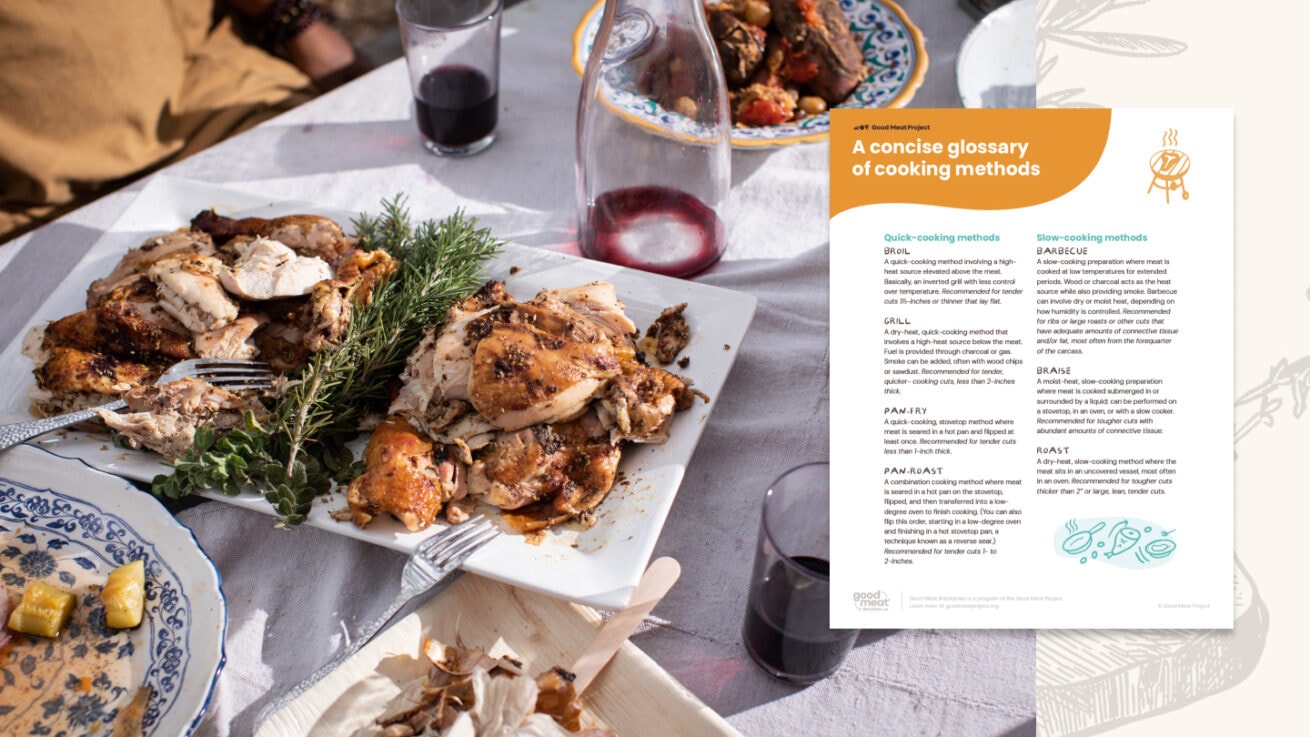
Related article
Let's break down the best ways to cook all those cuts.
Good Meat BreakdownFindingBuying Options
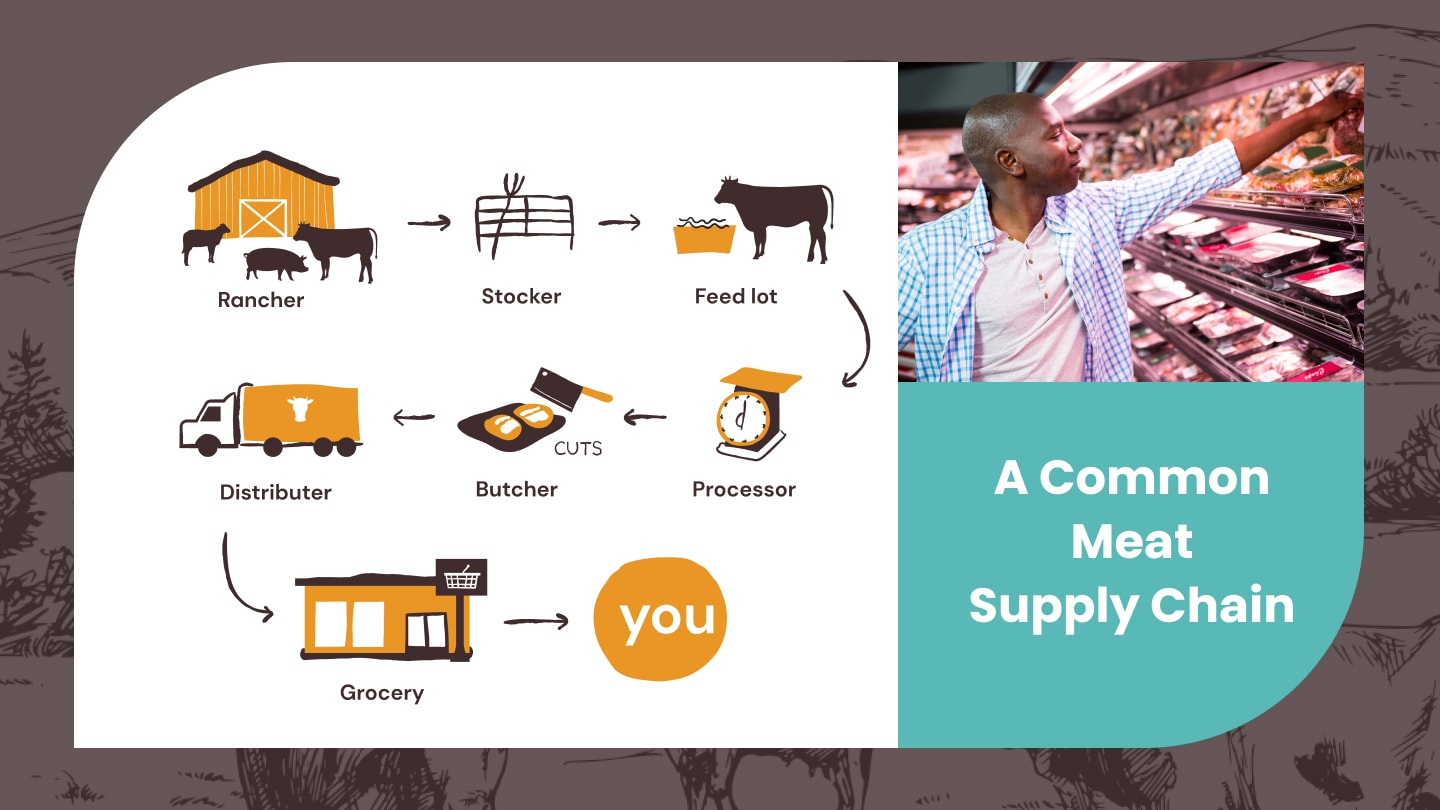
Buying meat from farms or at farmers markets, or filling up a freezer with half a hog isn’t doable for all of us. Many of us purchase meat at the supermarket. The choices we make in those aisles are based on a very personal formula that includes our values, our time, our budget, and our kitchen knowledge.
While your meat choices at the supermarket may not be the same as they would be at a farmers market, it’s still worth learning how to navigate labels at the grocery store to see how close you can come to meat that aligns with your values. Learning more about food labels and certifications can be helpful, but we realize it’s not everyone’s cup of tea.
Even if you can't find meat that comes from production practices you feel good about. There are other ways to make Good Meat® choices. For instance, buying cuts that aren’t as well known (say a Denver steak over a T-Bone) can indirectly support Good Meat® supply chains, because you’re creating demand for every part of the animal, not just certain cuts.
Here’s the lay of the land.
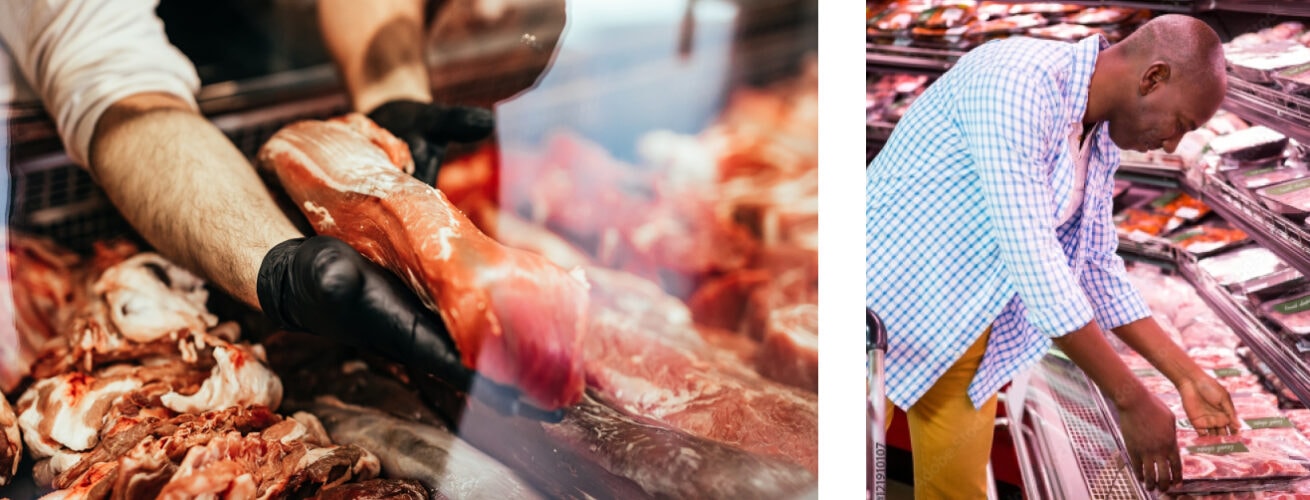
You generally have one or two options at most grocery stores: purchasing pre-cut, pre-packaged meat from a refrigerated meat case, or ordering at the meat counter, if your grocery store has one. The fridge case is faster and has clearer pricing. The packages of meat may also offer helpful labels that tell you about what’s inside and how that meat was raised.
While ordering at the meat counter might take longer (because you’ll be engaging with a real human being), you can often order more exact quantities of meat and you can ask for cuts not featured in the case. The people working behind these counters can even take care of kitchen tasks for you, like deboning a pork shoulder or grinding meat fresh. It also gives you the opportunity to learn more about the meat and where it came from, although, depending on the meat sourcing practices of the grocery store, those working behind the counter may not always be able to answer your questions in detail.
When you buy directly from a farm, you typically have access to more information. You might be able to visit the farm, talk to the farmer, or even see how the sausage is made, so to speak. But when you buy at a grocery store, the distance between you and the farmer grows a lot bigger. To bridge that gap, some brands use labels to showcase what sets them apart from other brands in the meat case, but labels can be confusing.
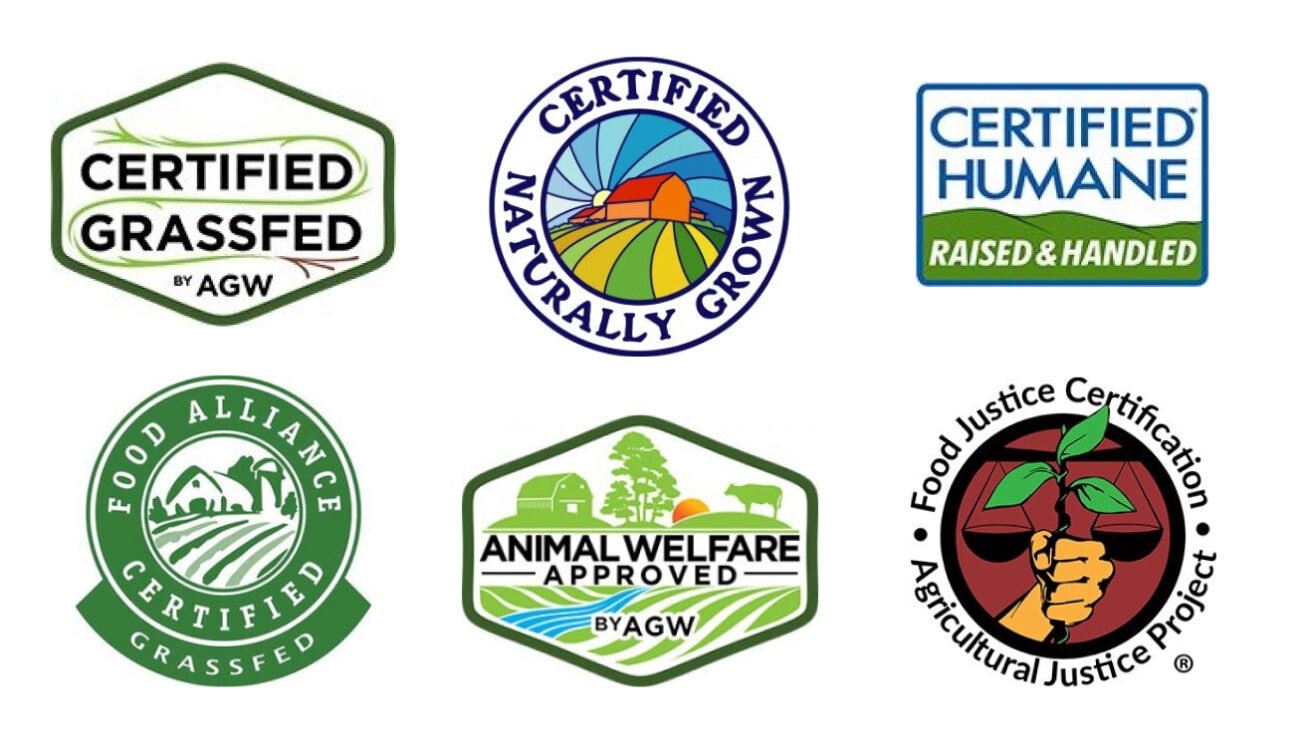
Whether you buy at the case or the counter, having a basic understanding of the spectrum of labels that you might encounter can be helpful. There’s a myriad of issues shoppers choose to care about: animal welfare, environmental impacts, working conditions, animal diet, and more. In some cases, actual certifying organizations (like Animal Welfare Approved, American Grassfed Association, or Audubon Certified) exist to ensure transparency and reliability in labeling. In other cases, meat producers have gravitated toward using certain words or phrases on their packaging (like “natural” or “cage-free”), but it’s not always clear what those labels mean or whether their definitions are even regulated. It can often feel like a lot of buzzwords are packed into one package of ground beef.
Likely, one certification or label won’t check off all the boxes. It might be helpful to think about your Good Meat® values as a spectrum of production practices and then decide what your priorities are. (Also take a deep breath and don’t be too hard on yourself, because, you alone are not responsible for changing our entire food system.)
To demystify your options, read this article, from The Counter, about interpreting labels like “free range,” “pastured,” “grassfed,” and more. Most of these labels are regulated by the USDA and have specific definitions attached to them, but there are some words you’ll see on a label that don’t mean anything at all! It can take time to examine a brand outside of its labels and buzzwords, and see what they really stand for. Foodprint’s Food Label Guide is also a helpful resource.
You might also come across stores that utilize the Global Animal Partnership (GAP) program. This is a global program that gives an animal welfare rating from 1-5 for each source of meat. The GAP program specifically focuses on animal welfare, but does not certify other aspects of how you might define your Good Meat® values, just as an organic label doesn’t tell us anything about animal welfare practices.
The truth is, when cooked properly, every cut of meat has the potential to be delicious.
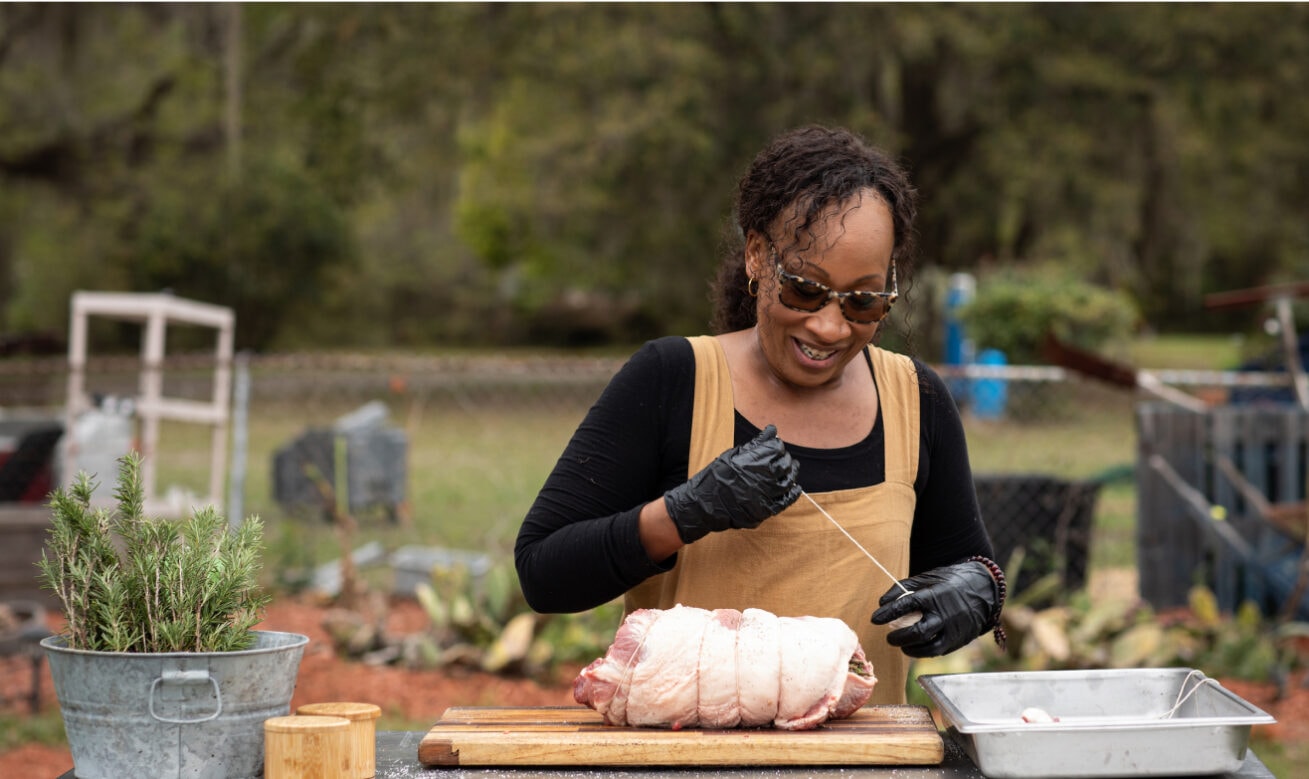
Many of us meat-eaters are indoctrinated into a meat buying hierarchy that goes something like this: “tender,” expensive cuts of meat are more desirable than “tougher,” more affordable ones. But just think about barbecue: a humble pork shoulder or brisket absolutely transforms with the right cooking temperatures and times. And, in some cases, those cuts are more forgiving than the quick-cooking cuts we’ve come to value above them (an Instantpot or slow cooker also really help in this arena).
We encourage you to look at the meat case, or to chat with the butcher behind the counter, with an open mind. While we all know the pleasure of a good steak, remember that an entire beef tenderloin is just 1.5% of the carcass weight. That leaves a lot of beef left to enjoy. Being willing to eat every part of the animal is actually a great way to support Good Meat® producers and brands. Think about how many animals it takes just to satisfy the demand for tenderloins.
To learn more about “tender” vs. “tough” cuts and how to prepare each cut in the kitchen, head on over here. Whether you buy your meat straight from a farm or at the grocery store, our cooking suggestions remain the same.
Learn more about how to order meat from the person behind the meat counter..

Related article
Let's break down the best ways to cook all those cuts.
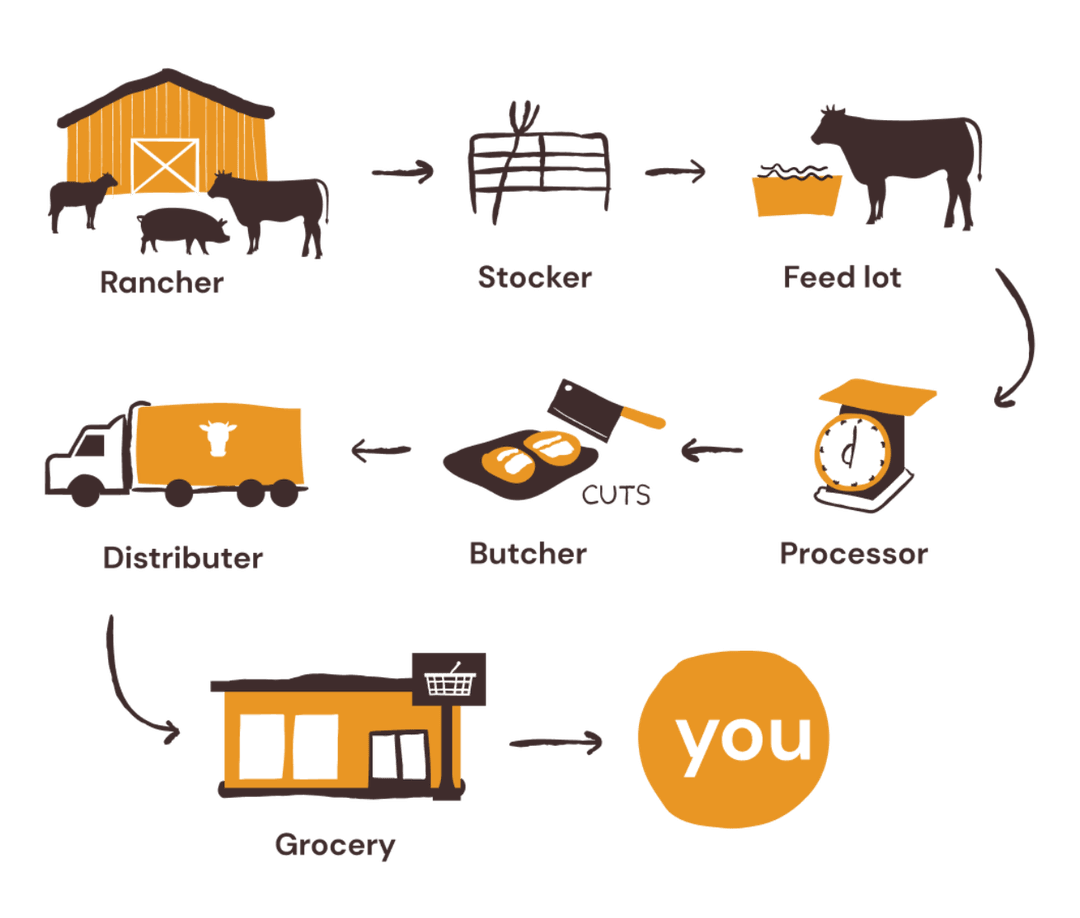

Practical tools and a national directory to help you choose—and champion—ethical and responsible meat.